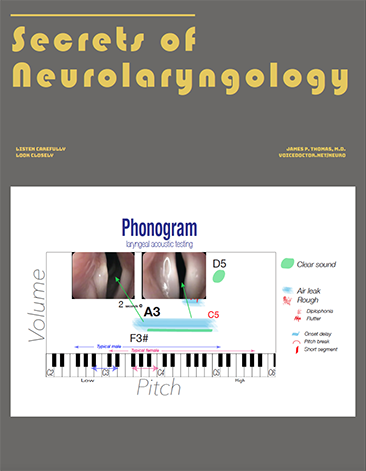Becoming a neurologist of the larynx takes time to observe and reason about the functions of each muscle of the larynx.
There are three muscles on each side of the laynx innervated by the recurrent laryngeal nerve and one muscle on each side innervated by the superior laryngeal nerve and one essentially midline muscle, so we could say there are 9 muscles of the larynx. If there is only a binary on and off possibility for each muscle duing function, then in theory we have a possibility of 92 possible configurations of the larynx or 81 different positions that the vocal cords could assume. Of course in practice there are less than this because the muscles usually work in harmony on either side of the larynx.
However, after an injury, a muscle might just be weak and function partially, so now we have at least three possible configurations for each muscle. No innervation, partial innervation, complete innervation, so we could say 93 possible visual configurations of the larynx or 729 different configurations.
The nerve supply to the larynx is very robust. After a nerve injury, nerves will typically regrow. In this process of regrowth, the wrong nerve could supply input to a muscle. The nerve for the PCA might go to the TA muscle leading to contraction at an inappropriate time. Now each muscle could have at least 4 states: no function, normal function, partial function, function at an inappropriate time. So now we have at least 94 or 6541 different possible configurations. This is certainly potentially very confusing.
With careful endoscopic examination, a visual neurolaryngeal examination is more precise than an electromyogram (EMG) of the vocal cord muscles. It is also much simpler and more comfortable for the patient.
To simplify, the examiner benefits from a video recording over several cycles of a function, including respiration and then phonation. Reviewing the film slowly and repetitively, looking at one function repeatedly and comparing side to side a pattern will usually be discernable. The same film can be reviewed again looking at a different function or area of anatomy.
Reviewing motion of different portions of the larynx separately will lead to an understanding of when the muscles, and hence nerves, are firing. You will have a visual understanding of the neurophysiology of the larynx. Here are a few secrets to winnowing the complexity of movement down to a specific diagnosis.
I anticipate a series of videos on the various muscles of the larynx. First in the series to be finished is the Superior laryngeal nerve.
Weakness of the lateral cricoarytenoid muscle is frequently missed, but with a focus on the vocal process, it can be identified.

